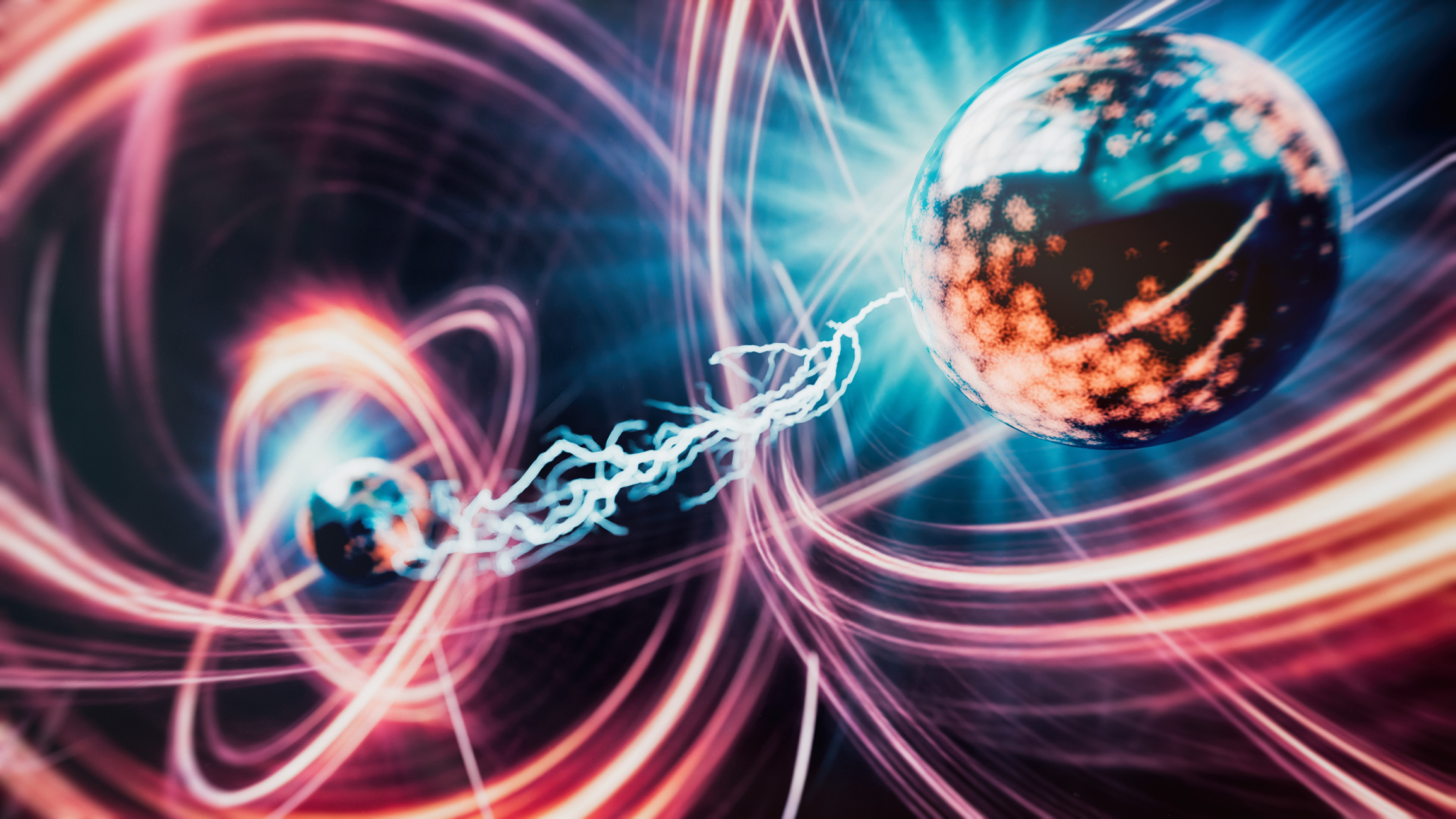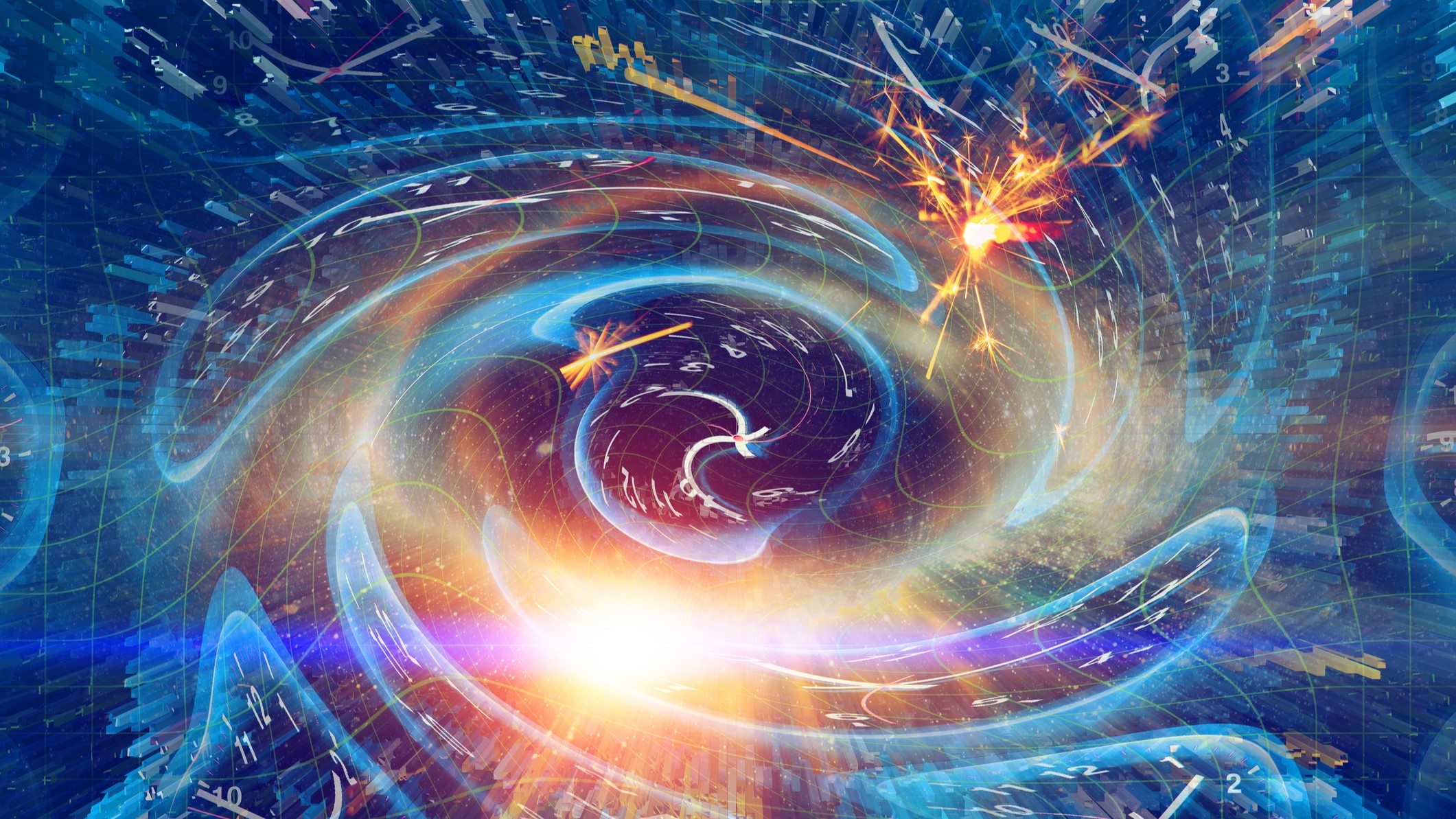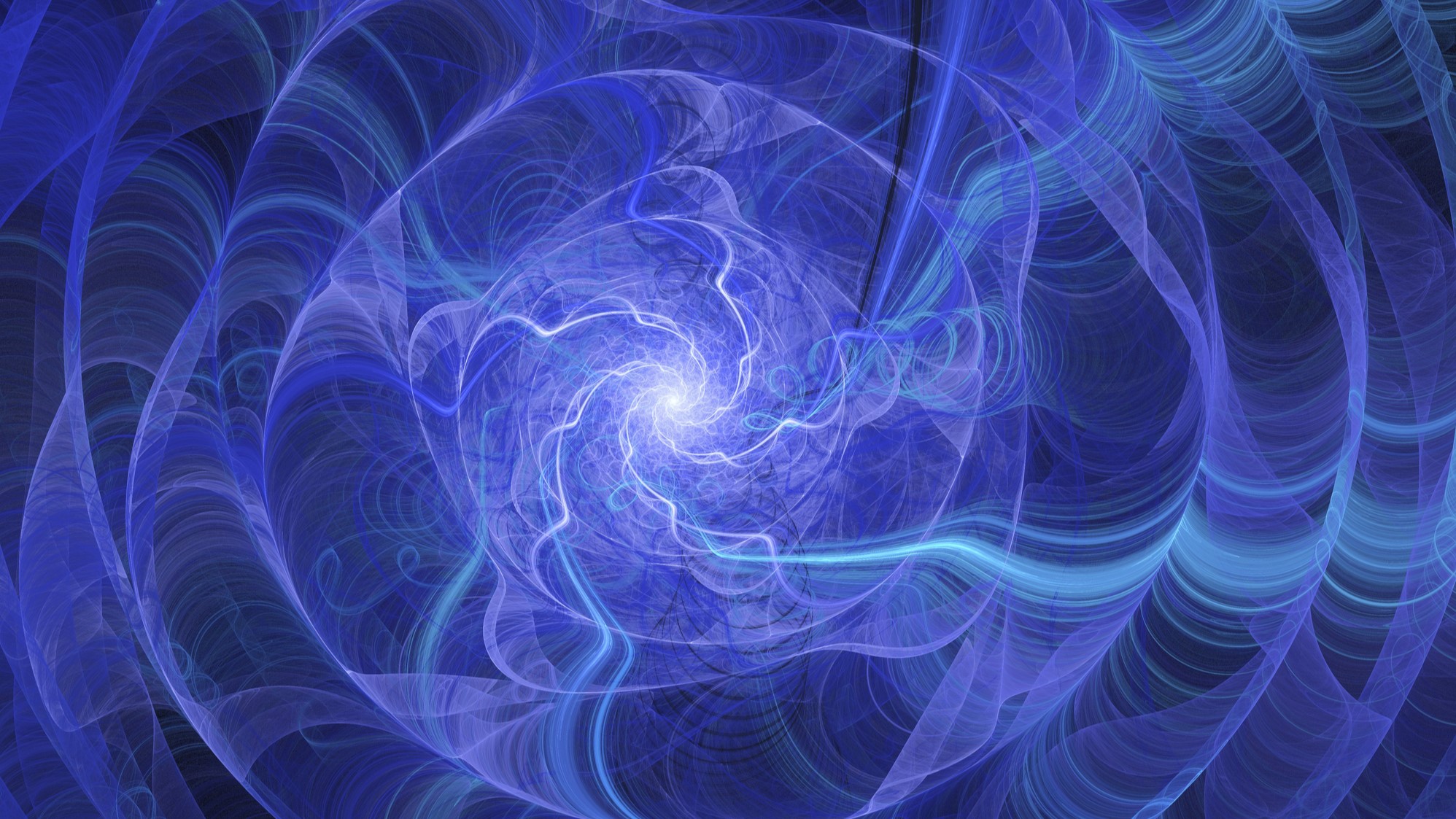
Quantum gravity is an attempt to unite the incompatible worlds of quantum mechanics and gravity. It does so by modifying one or both theories to reconcile the models.
Our understanding of physics is far from complete. On small scales, we have the theory of quantum mechanics. A paradigm of quantum mechanics is the Standard Model, which explains many of the smallest particles and how they behave. On large scales, the main force governing objects is gravity, described by general relativity. But when trying to reconcile these two models together, scientists have fallen short; quantum mechanics and general relativity are not compatible with each other.
Quantum gravity is that unknown key — the way to make the quantum world and the world of gravity work well together.
Quantum gravity FAQs
What is quantum gravity in simple terms?
Quantum gravity is an attempt to reconcile two theories of physics — quantum mechanics, which tells us how physics works on very small scales — and gravity, which tells us how physics works on large scales.
Is quantum gravity possible?
Not only is quantum gravity possible; it is necessary to fill in the gaps in our understanding of physics. There are many possible models of quantum gravity, but so far, none have been proven.
What could quantum gravity solve?
Quantum gravity can help us understand the physics within black holes and the moments right after the birth of the universe. It can also aid us in understanding quantum entanglement, condensed matter physics and quantum information.
Standard Model vs. general relativity
In quantum mechanics, values such as position, momentum, energy and spin are "quantized," which means they can only take on certain discrete values rather than any value.
To picture this, imagine you are creating a picture with a box of 64 crayons. This may sound like a lot of colors, but for this particular example, you can’t blend colors. You are always limited to 64 discrete colors.
Gravity, described by Einstein's theory of general relativity, is not like this. Instead, it is classical, with particles or objects taking whatever values they choose. In our example, “Classical” colors are more like paint — they can be blended into an infinite range of colors, and can take on a hue in-between ones you find in your crayon box.
There are other differences between the two theories. In quantum mechanics, the properties of particles are never certain. Instead, they are described by "wave functions," which give only probabilistic values. Again, in general relativity, this uncertainty does not exist.
Finally, the Standard Model explains how three of the four fundamental forces of nature work — the electromagnetic force, the weak force and the strong force. Each of these forces is mediated by a boson — a photon for the electromagnetic force, a W or Z boson for the weak force, or a gluon for the strong force). These bosons act as "delivery" particles, carrying the force between other particles.
The fourth force of nature, gravity, again is where the problem lies. Gravity is not known to have a particle that mediates its interactions, and so far, searches for this particle — the hypothetical graviton — have come up empty-handed.
Why we need quantum gravity

Both general relativity and the Standard Model work extraordinarily well in their own regimes and have stood up to test after test. Yet the physics is incomplete when each of these theories steps outside its regime — for example, in extreme environments like the centers of black holes or the first moments of the universe.
Another example arises if you imagine a photon traveling through the universe. General relativity tells us this photon would follow a classical path that aligns with the curves and contours of space-time from the gravity of planets, stars and galaxies. Yet this photon also follows the rules of the electromagnetic force, governed by quantum mechanics — and we don't know how to write the laws of quantum mechanics in curved space-time.
All of this means our understanding of physics is incomplete. If we want to understand the universe, we need a way to unite incompatible theories, and quantum gravity does that. This sometimes involves attempts to "quantize" gravity, or modify it in some way to be compatible with quantum mechanics. Other attempts to find a theory of quantum gravity modify quantum mechanics to agree more with gravity, while other theories combine the two approaches.
Is quantum gravity string theory?

String theory is one of many attempts to develop a quantum gravity model. String theory suggests that particles are actually tiny strings. Imagine a guitar string; various modes of vibration create different notes. Similarly, in string theory, modes of vibrations create different particles. One of these vibrations describes a graviton, which behaves in a way that reconciles quantum mechanics and gravity.
There are other models of quantum gravity as well. Holographic duality, a theory spawned from string theory, suggests that there is a projection of this universe — a "holograph — with no gravity. In this projection, the Standard Model works smoothly. Another theory, called loop quantum gravity, proposes that the universe is made up of small, interconnected loops that essentially quantize space-time.
Ways to test for quantum gravity
Researchers have proposed many ways to probe the regime of quantum gravity. Many of these involve quantum entanglement, small changes from quantum fluctuations in gravity seen in neutrinos, and spin interferometers. New generations of gravitational wave detectors may also find evidence of quantum gravity in mergers of black holes, which may have quantum effects or evidence in the cosmic microwave background.
Future experiments may lead to new insights about quantum gravity. In the meantime, it illustrates that there is still a lot we don't understand about the universe.
Additional resources
More detail on quantum gravity can be found in the Stanford Encyclopedia of Philosophy. Watch these videos to learn more about loop quantum gravity and whether the string theory is the final solution for all of physics' questions.
Bibliography
Siegel, Ethan. "The fundamental problem with gravity and quantum physics," Big Think. https://bigthink.com/starts-with-a-bang/problem-gravity-quantum-physics/
"The Standard Model," CERN, https://home.cern/science/physics/standard-model
"Quantum Gravity," Stanford Encyclopedia of Philosophy, https://plato.stanford.edu/entries/quantum-gravity/







